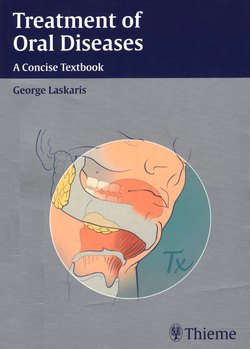Читать книгу Treatment of Oral Diseases - George Laskaris - Страница 5
ОглавлениеPreface
Oral medicine is an important discipline and the diagnostic and therapeutic challenges faced by the stomatologist range from trivial, isolated, innocuous oral lesions to the oral manifestations of life-threatening systemic diseases. It requires a thorough understanding of and a firm knowledge base in dentistry, oral pathology, otorhinolaryn-gology, dermatology, and internal medicine.
The diagnostic part of the practice of oral medicine is addressed in many excellent texts including the Color Arias of Oral Diseases by the author of this volume.
This book aims to provide a concise, practical, and reliable guide to the management of oral diseases. The field of therapeutics of oral diseases is progressing rapidly and every effort has been made to include evidence-based multimodality therapeutic regimens-drugs, surgery, and other therapeutic means-where appropriate. However, I ask the reader to keep in mind that this book is not meant to be a substitute for a thorough knowledge base or the comprehensive literature on each and every therapeutic component used in clinical practice. Nor is it aiming to present details of surgical techniques.
The emphasis is on formulating and implementing a sound therapeutic plan, following an initial clinical evaluation, a comprehensive differential diagnosis, and an accurate final diagnosis. Three universal principles of therapeutics are high-lighted. The first principle of management of oral disease is comprehensive and addresses the patient as a whole, not just a particular lesion. The time devoted to establishing a healthy and trusting relationship with the patient and his patient’s family, alleviating anxiety, fear and other concerns, explaining the pros and cons of various therapeutic strategies in simple terms, is time well spent for both the patient and the physician. Secondly, in complex problems, cooperation and consultation among the various subspecialties involved in the care of a patient, with clearly defined roles and goals for all involved, are mandatory. Lastly, since the time of Hippocrates, therapeutic excess leading to harm is to be avoided–in modern terms, the choice of a particular therapeutic approach should be based on the available scientific evidence.
The book is divided into three parts: Part 1 presents the definition and a brief summary of each disease–etiology, main clinical features, diagnosis and differential diagnosis, and a detailed multimodality treatment plan. For practical purposes. disease entities appear in alphabetical order in the contents. Part II provides information regarding the main categories of drugs and the commonly used individual drugs within these categories, which have proved useful in the treatment of a particular disease. Part III provides a synopsis of the basic principles and oral applications of lasers, which are making significant inroads in the field of oral therapeutics.
It is my hope that stomatologists, oral surgeons, dentists, dermatologists, otorhinolaryngologists, pediatricians, and internists alike will find the information in the book useful for the treatment of oral diseases.
Sincere thanks are due to the contributors of this volume for sharing their experience and knowledge of the treatment of specific oral diseases. I would also like to express my gratitude and thanks to Dr Stathis S Papavasiliou, Associate Professor of Internal Medicine, for his helpful comments and corrections. Finally, my deepest gratitude goes to my family for their constant support and love.
Athens, September 2004 George Laskaris
